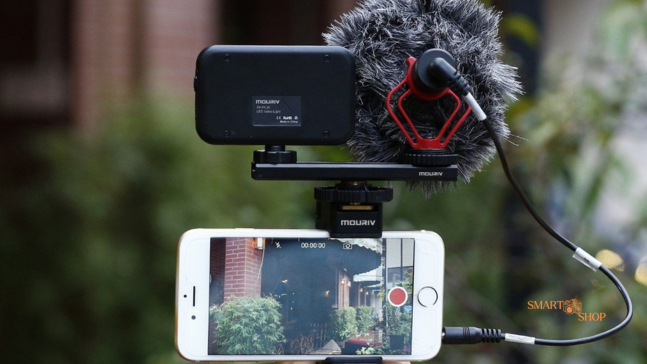How long does film last in a camera, depending on the storage conditions and the film type. The lifespan varies significantly between color and black and white film as well as different brands and ISO levels.
Capturing memories with a film camera is a timeless classic and an irreplaceable nostalgic experience. However, have you ever wondered how long film lasts in the camera before developing? Film shelf life depends on factors such as film type, storage conditions, and ISO level.
Black-and-white films are much more durable than colour films. For example, black-and-white film can last up to 100 years if stored properly, while colour film can degrade in just a few years. This article will explore the shelf life of different types of film and provide tips for extending the life of your film.
Factors Affecting Film’s Longevity
Several factors affect a film’s longevity in a camera, including storage conditions, humidity, temperature, and light exposure. Proper handling and storage can significantly increase a film’s lifespan, preserving memories for generations to come.
Factors Affecting Film Longevity Capturing memories on film has been a popular hobby for many years, but have you ever wondered about the lifespan of a roll of film? The film can last for years, but certain factors can affect its longevity. In this blog post, we’ll examine the factors determining how long a film stays in a camera.
Storage Method
Storing a film correctly can prolong its life. Films should be stored in a cool, dry place, away from direct sunlight and moisture. Choosing a storage area that is not prone to extreme temperature fluctuations is essential. High humidity levels can damage the film, so storing it in airtight containers with desiccants to absorb excess moisture is advisable.
Temperature And Humidity
Temperature and humidity can significantly affect the life of the film. Extreme temperatures can cause film to deteriorate much faster than average room temperatures. The ideal temperature for storage is between 13 and 15 °C (55 and 59 °F). High humidity levels can cause mould to grow on the film’s surface, causing damage. Maintaining a controlled temperature and humidity level is essential to help keep the movie in good condition.
Exposure To Light
Exposure to light can cause severe damage to film, so it is vital to handle and store it carefully. Ultraviolet (UV) light is particularly harmful to cinema. If left exposed to sunlight, the film may discolour, lose contrast, or develop a yellow tint. To avoid light pollution, store the film in a dark place until ready to use. This storage tip applies to both exposed and unexposed films.
Type Of Film
Finally, the type of film you use affects its longevity. Different brands of films offer various levels of durability, and some are more prone to damage due to heat, humidity, and light exposure. Some films are optimised for longevity, while others are not. If you’re looking for a durable film, it’s worth researching which brands are known for their durability. In conclusion, several factors can affect the longevity of a roll of film, including storage method, temperature and humidity, light exposure, and the type of film used. Ensuring proper storage techniques and handling your film with care can extend its life and preserve your precious memories for many years.
Determining Film’s Shelf Life
Determining a film’s shelf life is crucial for photographers to ensure the quality of their shots. Film can last for years if properly stored at stable temperature and humidity, but it can also degrade quickly if exposed to unfavourable conditions.
Determining Film Shelf Life If you are a photographer who loves shooting with film cameras, one of the most important things to consider is the shelf life of your film. The film is a perishable product that can degrade or lose its quality over time. It’s essential to understand how long your film will last so you can plan your photography projects accordingly. Expiration Date The first thing to check when determining the shelf life of your film is the expiration date. Film manufacturers often print expiration dates on the film packaging. This date indicates the time frame the film will operate at its optimal performance. Beyond the expiration date, the film may degrade, affecting its image quality.
To perform the film emulsion test
It is important to note that the expiration date is not an absolute indicator of the shelf life of your film. Several factors can affect the shelf life of your film, such as how it was stored, temperature, and humidity levels. Films stored in cool, dry conditions can often last past their expiration date, while those stored in warmer or humid conditions can degrade more quickly. Film Emulsion Test: Let’s say you have some old film lying around and wonder if it’s still usable. In that case, you can perform film emulsion tests to determine its quality. This method involves exposing a small film strip to light, processing it, and examining the resulting image. The test can give you an idea about the film’s overall quality and whether it is worth using.
To perform the film emulsion test, you will need a film strip, a light source, and a darkroom or changing bag to process the film. First, cut a small film strip from the roll and expose it to the light source for a few seconds. Next, process the exposed film following the manufacturer’s instructions and examine the resulting image for signs of degradation.
In conclusion, determining the life of your film is crucial to getting the best results from your film camera. Check the expiration date and store your movie in a cool, dry place to extend its shelf life. If you have some old film lying around, consider performing an emulsion test on the film to check its quality before using it for any significant photography project.
Maximizing Film’s Longevity
Maximising film longevity is essential to capture timeless moments through photography. Although no exact answer exists regarding how long film lasts, storage techniques and regular use can help extend its lifespan. In this post, we’ll cover methods you can use to maximise the life of your film, including proper storage techniques, freezing the film, using new film, and using the film regularly.
Proper Storage Techniques
Storing the film in a cool, dry place, away from direct sunlight, can help extend its life. The ideal storage temperature is between 10 and 21 °C (50 and 70 °F), while the humidity level should be between 30 and 50%. Additionally, it is best to keep the film in the original cartridge and store it in an airtight container or bag.
Film Freezing
Freezing film is another technique that can prolong its life. If stored in a freezer, the film can last up to several years. Before use, allow the film to come to room temperature before removing it from the freezer to prevent condensation from forming on the film, which can damage it.

Usage Of Fresh Film
Using new film can ensure better image quality and extend its life. The film has a shelf life, and after a while, the chemicals in the film begin to break down, resulting in poor image quality. It is always best to buy and use a new film within its expiration date.
Regular Film Usage
Regular use of the film can help maintain its quality and prolong its life. If you have a film that has been unused for a long time, it is best to use it before it expires. Regular use can prevent the chemicals in the film from breaking down and help keep the movie in good condition for a more extended period.
Film Photography Vs Digital Photography
Film photography and digital photography are two completely different ball games. Film photography is the classic and traditional way of taking photographs, while digital photography is the modern and most convenient way of capturing images. Film photography uses various types of film, which are sensitive to light, to capture images with a camera. The light-sensitive film captures the image, and the chemical process develops the image in the movie. In contrast, digital photography uses image sensors, CCD or CMOS chips to capture the image, and software processes them and converts them into images. In this segment, let’s look at the advantages of film and digital photography.
Advantages Of Film Photography
Film photography has quite a few advantages over digital photography:
- Film cameras have a longer lifespan compared to digital cameras.
- Film photography results in more natural-looking photographs.
- Using a film camera lets you master photography since you can’t preview the photo.
- Film photography produces better-quality images compared to digital photography.
- The movie allows for a more creative and artistic approach since no instant preview exists.
Advantages Of Digital Photography
Digital cameras are more popular than film cameras due to their various advantages, such as:
- Digital cameras allow you to preview the image right after taking it, ensuring that you get the perfect shot every time.
- Digital cameras can take a large number of photographs, which is not possible with a film camera.
- Digital photography allows for the editing and customization of images using photo editing software.
- Digital cameras are more cost-effective in the long run because they do not involve film costs.
- Digital cameras are more versatile as they can also capture videos.
In conclusion, film and digital photography have advantages, and choosing between them depends on personal preferences and the intended purpose of the images. While film photography provides more authenticity and natural beauty, digital photography allows you to capture more pictures and edit them to your liking. However, despite the advantages of digital photography, film photography has its charm and adds a unique artistic touch that digital photography cannot match.
Preserving Film Photography
Film photography is an art that requires skill and patience. The resulting images are unique, and the process of capturing them is a memorable experience in itself. However, one of the biggest challenges of film photography is preserving the film. Unlike digital images, film requires careful handling and storage to prevent degradation.
Film Archiving And Digitization
Film archiving and digitization are important aspects of film photography preservation. Archiving refers to the storage of physical film negatives in an organised, temperature, and humidity-controlled environment. This helps prevent degradation, ensuring that the negatives remain as close to their original state as possible.
Digitization, on the other hand, involves converting physical films into digital images. This not only preserves pictures but also allows for easy sharing and manipulation. Thanks to technological advances, digitising cinema with high precision and detail is now possible.
Film Restoration Techniques
Over time, film can degrade due to various factors such as temperature, humidity, and light exposure. This degradation can cause colour changes, discoloration, and other visual imperfections. However, techniques are available to restore the film to its original state.
One such technique is film cleaning, which involves removing dirt and dust from the film’s surface using specialised tools and solutions. Another technique is colour correction, which consists of adjusting the image’s colour balance to counteract any colour shift caused by degradation.
In addition to these techniques, specialised services can restore damaged or deteriorated film. These services can be expensive but are often worth it to preserve essential or irreplaceable images.
Preserving film photographs requires careful handling, storage, and maintenance. Whether through archiving, digitising, or restoration, ensuring the longevity of film negatives is crucial to keeping this unique art form alive.
Frequently Asked Questions On How Long Does Film Last In A Camera
Does Camera Film Expire?
Yes, the camera film expires. Depending on type and storage conditions, the film has a limited shelf life. For best results, it is recommended to use it before the expiration date. Expired film can produce unexpected results, such as colour and contrast changes, loss of detail, or even the complete inability to capture an image.
Can You Develop 20 Year Old Film?
Yes, it is possible to develop 20-year-old films. However, the results may not be as desirable as when the film was fresh or stored properly. Film degradation over time may also affect image quality.
Is It Bad To Leave Film In A Camera For Too Long?
Yes, leaving a film in the camera for too long is bad. Over time, film can deteriorate and lose its quality, colour accuracy, and sharpness. To maintain its quality, it is best to develop the film as soon as possible or store it properly in a cool, dry place.
Can You Leave Film In A Film Camera?
Yes, you can leave a film in a film camera. However, it is recommended that you develop the film as soon as possible to avoid the possibility of deterioration. If the film will not be developed immediately, it is also recommended that you store the camera in a cool, dry place.
Conclusion
The film’s shelf life in a camera depends on several factors, such as storage conditions, film type, and expiration date. Proper storage allows some films to last for decades with little or no damage. However, it is essential to note that cinema is perishable and will eventually degrade.
Whether you are an amateur photographer or a professional photographer, respecting the expiration date of your film and storing it correctly is the key to long-lasting, high-quality results.



